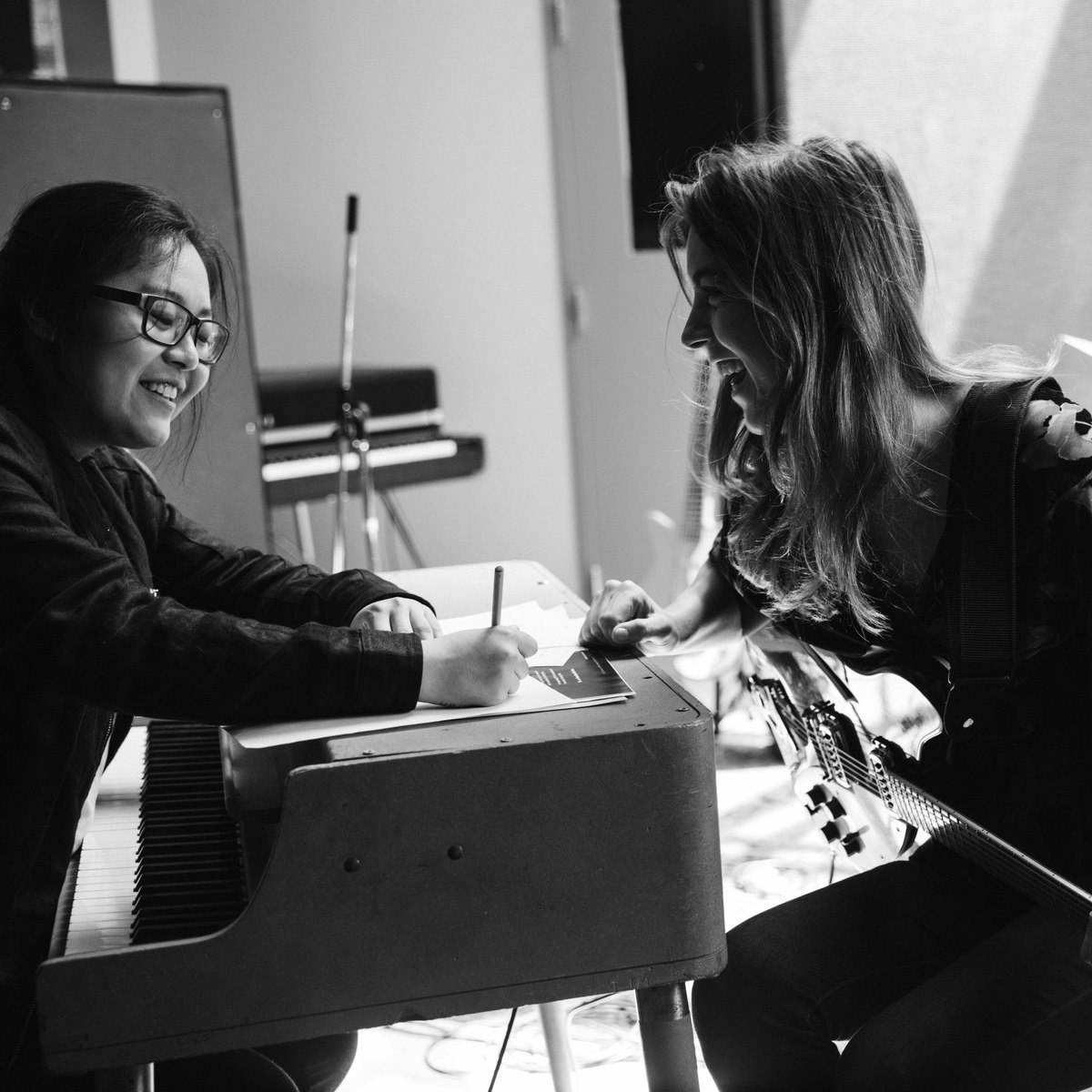Back to Courses









Arts And Humanities Courses - Page 8
Showing results 71-80 of 464

Revolutionary Ideas: Borders, Elections, Constitutions, Prisons
What is the purpose of government? Why should we have a State? What kind of State should we have?
Even within a political community, there may be sharp disagreements about the role and purpose of government. Some want an active, involved government, seeing legal and political institutions as the means to solve our most pressing problems, and to help bring about peace, equality, justice, happiness, and to protect individual liberty. Others want a more minimal government, motivated, perhaps, by some of the disastrous political experiments of the 20th Century, and the thought that political power is often just a step away from tyranny. In many cases, these disagreements arise out of deep philosophical disagreements.
All political and legal institutions are built on foundational ideas. In this course, we will explore those ideas, taking the political institutions and political systems around us not as fixed and unquestionable, but as things to evaluate and, if necessary, to change. We will consider the ideas and arguments of some of the world’s most celebrated philosophers, including historical thinkers such as Plato, Hugo Grotius, David Hume, Thomas Jefferson, and James Madison, and more contemporary theorists such as Michelle Alexander, Kwame Anthony Appiah, Bryan Caplan, Angela Davis, Ronald Dworkin, Jon Elster, John Hart Ely, H.L.A. Hart, Michael Huemer, Andrew Rehfeld, and Jeremy Waldron.
The aim of the course is not to convince you of the correctness of any particular view or political position, but to provide you with a deeper and more philosophically-informed basis for your own views, and, perhaps, to help you better understand the views of those with whom you disagree.

Ideas from the History of Graphic Design
This condensed survey course focuses on four key periods or themes from the history of design in the West. Together we’ll trace the emergence of design as a recognized practice, why things look the way they do, and how designers approached specific design problems in their work.
Students will develop an understanding of where the wide variety of today’s design practice comes from. By participating in this survey of the works of innovative groups and individuals, we outline the process by which graphic design moved from a purely instrumental practice, to becoming a demanding creative and hybridized field.
Each week, a short quiz will test your knowledge of concepts, and a short reflective assignment will give you the opportunity to analyze the questions designers ask themselves today.
This is an essential course for emerging designers entering the field, or for students interested in learning more about visual culture and analysis. No previous experience is required.
A note about this course:
This course is taught from the perspective of contemporary design, to connect ideas that helped formulate design practice from the 1850s through the 1960s to the ways that designers think today. The relationship of words and pictures in graphic design is looked at through the ever-changing social and cultural contexts, technologies, aesthetics, and politics of their eras.
The definition and practice of graphic design includes all public visual communications, which is a global practice. It was the evolution of mass production and communication in the West that specifically redefined graphic design as a professional practice and is this course’s particular narrative. We hope students will consider how to connect the themes and ideas offered in this course to your own culture.

How to Crop and Resize in Adobe Photoshop
Adobe Photoshop can be a useful tool in editing digital photography, but it can also be an overwhelming program to learn how to use. In this guided project, learners will walk through a step by step process to gain the basics of how to crop and resize images in Adobe Photoshop.
First, learners will prepare Adobe Photoshop and images for cropping and resizing. Then, learners will walk through the basics of using the Crop tool in Photoshop. Next, learners will gain an understanding about how to edit images using more advanced cropping features. Then, learners will move on to understand and edit the Image Size. Finally, learners will be guided through some advanced features to resize images in Photoshop. Learners will finish this guided project with the skills to crop and resize images in Adobe Photoshop.

Digital Fashion Mindset
Digital Fashion Mindset is a collaboration between Parsons School of Design at The New School and The Digital Fashion Group Academy.
This course teaches you to recognize the significance of the digital revolution in historical and present-day contexts and how it relates to the fashion industry’s ability to use technology creatively and collaboratively.
Digital Fashion Mindset teaches you to recognize the significance of the digital revolution in historical and present-day contexts and how it relates to the fashion industry’s ability to use technology creatively and collaboratively.
In this course, you will learn about the effects of the Industrial Revolution and its impact on the automation of textile production, which allowed the commercial sale of clothing. You will examine the digital revolution and how data collection and smart devices have changed the climate of fashion in all aspects of business. You will discuss key players in the industry who have adopted the digital mindset and how they embrace 3D software to minimize waste, reinvent sustainable production processes, and decrease costly physical labor.
Throughout the course, you will see the effects the digital world and digital empowerment have on fashion, and the way it is redefining the industry for designers, entrepreneurs, and consumers. At the end of the course, you will use the knowledge you have gained into the digital mindset to create a compelling Digital Fashion Mindset Vision Statement and develop your own approach to digitalization by comparing the potential of digitalization in your own practice.

Get Started with Adobe Illustrator
In this project, you will learn how to start using Adobe Illustrator. Adobe Illustrator is a vector-based design program in which you can design anything from logos, symbols, icons, patterns, compositions for posters, web, social media, and any other marketing material you want to create.
You will know the main software tools and their uses to be able to create different arts for marketing purposes. Knowing the basics of graphic design is a great added value to any professional today. You can extend your opportunities in the professional world with the right tools. Today we will be creating a simple logo using the key tools in Adobe Illustrator and you will be able to customize yours.
If you are a creative person and with a lot of desire to do things out of the box this is the pro With the tools that you will learn today you will be able to create any art, get excited!

Chinese Culture and Contemporary China
This course of Chinese Culture and Contemporary China will explore the foundations of Chinese civilization and the dimensions of Chinese culture. It will pay particular attention to the relationship between Chinese culture and the present-day life of the Chinese people and to the different elements of the culture which are under the present social structures, belief systems, literature, arts, customs, etc. The course aims at providing students with a deeper knowledge of Chinese culture, thus enabling them to better understand China.
The course will cover the following main areas of topics: (1) the foundations of Chinese civilization: its geography, language, and history; (2) the core concepts in Chinese philosophies and religions: Confucianism, Taoism, and Buddhism; (3), literature and arts, including Chinese calligraphy, painting, Tang poetry, and classical fiction; (4) society and life, including education, the role of women, Chinese food, and traditional holidays; (5) travel and landscapes, including well-known Chinese cities, mountains, ethnic regions and customs; (6) Chinese media, culture and sports, including TV and movies, fashion, Chinese gongfu and taiji.
In addition, students will be expected to participate in a buddy program beyond curriculum if they have a chance to come to Nanjing. Ideally they will be paired up: an international student with a Nanjing University student to allow students to learn firsthand about Chinese customs, culture, and language. Students will be required to complete various projects and homework assignments as well, which will encourage them to use Nanjing University and the city of Nanjing as a laboratory to apply what they learn during their stay at Nanjing University.

Teaching Reluctant Writers
All educators will encounter students who struggle with writing. This course first focuses on the reasons student writers may be reluctant and then provides learners with a variety of strategies and practices to help reluctant writers develop a greater comfort and confidence with writing. Learners will examine classroom relationships, mentoring, scaffolding, conferencing, low-risk writing and mini-lessons, all tools and techniques that can be brought right into the classroom to help struggling writers increase student participation and success in writing. They'll conduct their own study of one reluctant writer and use their learning to help create a plan for teaching reluctant writers in their current and future classrooms.
Think Again I: How to Understand Arguments
In this course, you will learn what an argument is. The definition of argument will enable you to identify when speakers are giving arguments and when they are not. Next, you will learn how to break an argument into its essential parts, how to put them in order to reveal their connections, and how to fill in gaps in an argument by adding suppressed premises. By the end of this course, you will be better able to understand and appreciate arguments that you and other people present.
Suggested Readings:
Students who want more detailed explanations or additional exercises or who want to explore these topics in more depth should consult Understanding Arguments: An Introduction to Informal Logic, Ninth Edition, Concise, Chapters 1-5, by Walter Sinnott-Armstrong and Robert Fogelin.
Course Format:
Each week will be divided into multiple video segments that can be viewed separately or in groups. There will be short ungraded quizzes after each segment (to check comprehension) and a longer graded quiz at the end of the course.

Arranging for Songwriters
You've created a song. You wrote the lyrics, decided on the melody, and maybe even recorded a simple demo. Now what? If you have a basic knowledge of how to use a digital audio workstation (DAW) and are passionate about being a songwriter, this course will help you take your song from a simple recording on your phone to a fully arranged song ready for the recording studio.
You will be learning from two Berklee College of Music Songwriting professors, Bonnie Hayes and Sarah Brindell. They will show you how to arrange original songs in a digital audio workstation. You will learn tools to heighten the emotional response of your listeners and you'll broaden your understanding of instrumentation and how to add sounds to your song without distracting the listener from the most important aspect: the vocalist.

How to curve and warp text in Adobe Illustrator
By the end of this project, you’ll be comfortable building complex designs out of text in Adobe Illustrator. You’ll create and transform type, place type on curving paths, and apply advanced warping with Object distort commands. By the end of the project, you’ll create a poster with type around a sticker and customized text inside a shape.
Popular Internships and Jobs by Categories
Browse
© 2024 BoostGrad | All rights reserved


